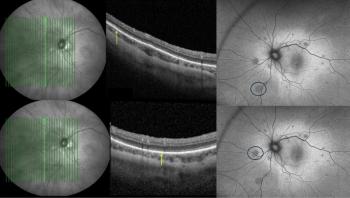
IOL-VIP system: new hope for low vision patients
Besides external magnifying glasses, certain intraocular lenses and devices have been proposed as feasible visual aids for AMD patients.
Key Points
Hereditary or acquired macular degeneration causes severe central vision loss and, in spite of several new therapeutic procedures, reduces the capability of patients to perform day-to-day activities, such as reading, writing, and precise handling. Importantly, it can lead to legal blindness.
Once central vision has been lost, optical devices that increase retinal image size by angular magnification offer the only chance of improving visual function. Besides external magnifying lenses, certain intraocular lenses (IOL) and devices have been proposed as feasible visual aids in these patients.
The first is the Hanita implant, which has a central hyper-minus lens, associated with a spectacle hyperpositive lens. The second is the Implantable Miniature Telescope (IMT); a quartz glass telescope prosthesis, which is implanted monocularly to give one eye improved central vision, while the other eye is left alone to continue to provide peripheral vision for orientation and mobility. Both devices improve retinal image size, but significantly reduce peripheral visual field, thus hampering everyday activities. A third option is the IOL-VIP (Intraocular Lens for Visually Impaired People) system, which consists of both a surgical and a rehabilitation approach designed ultimately to improve vision capabilities in maculopathy patients.
Newsletter
Get the essential updates shaping the future of pharma manufacturing and compliance—subscribe today to Pharmaceutical Technology and never miss a breakthrough.













































